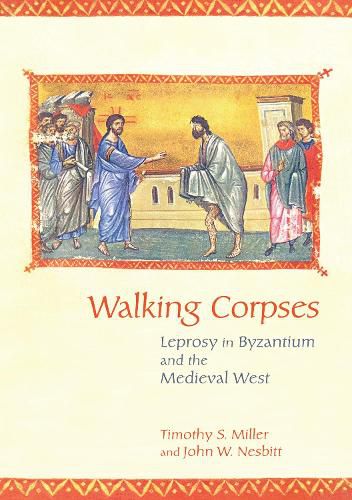Readings Newsletter
Become a Readings Member to make your shopping experience even easier.
Sign in or sign up for free!
You’re not far away from qualifying for FREE standard shipping within Australia
You’ve qualified for FREE standard shipping within Australia
The cart is loading…






In Walking Corpses, Timothy S. Miller and John W. Nesbitt contextualize reactions to leprosy in medieval Western Europe by tracing its history in Late Antique Byzantium, which had been confronting leprosy and its effects for centuries.
Integrating developments in both the Latin West and the Greek East, Walking Corpses challenges a number of misperceptions about attitudes toward the disease, including that theologians branded leprosy as punishment for sin (rather, it was seen as a mark of God's favor); that Christian teaching encouraged bans on the afflicted from society (in actuality, it was Germanic customary law); or that leprosariums were prisons (instead, they were centers of care, many of them self-governing). Informed by extensive archival research and recent bioarchaeology, Walking Corpses also includes new translations of three Greek texts regarding leprosy, while a new preface to the paperback edition updates the historiography on medieval perceptions and treatments of leprosy.
$9.00 standard shipping within Australia
FREE standard shipping within Australia for orders over $100.00
Express & International shipping calculated at checkout
In Walking Corpses, Timothy S. Miller and John W. Nesbitt contextualize reactions to leprosy in medieval Western Europe by tracing its history in Late Antique Byzantium, which had been confronting leprosy and its effects for centuries.
Integrating developments in both the Latin West and the Greek East, Walking Corpses challenges a number of misperceptions about attitudes toward the disease, including that theologians branded leprosy as punishment for sin (rather, it was seen as a mark of God's favor); that Christian teaching encouraged bans on the afflicted from society (in actuality, it was Germanic customary law); or that leprosariums were prisons (instead, they were centers of care, many of them self-governing). Informed by extensive archival research and recent bioarchaeology, Walking Corpses also includes new translations of three Greek texts regarding leprosy, while a new preface to the paperback edition updates the historiography on medieval perceptions and treatments of leprosy.